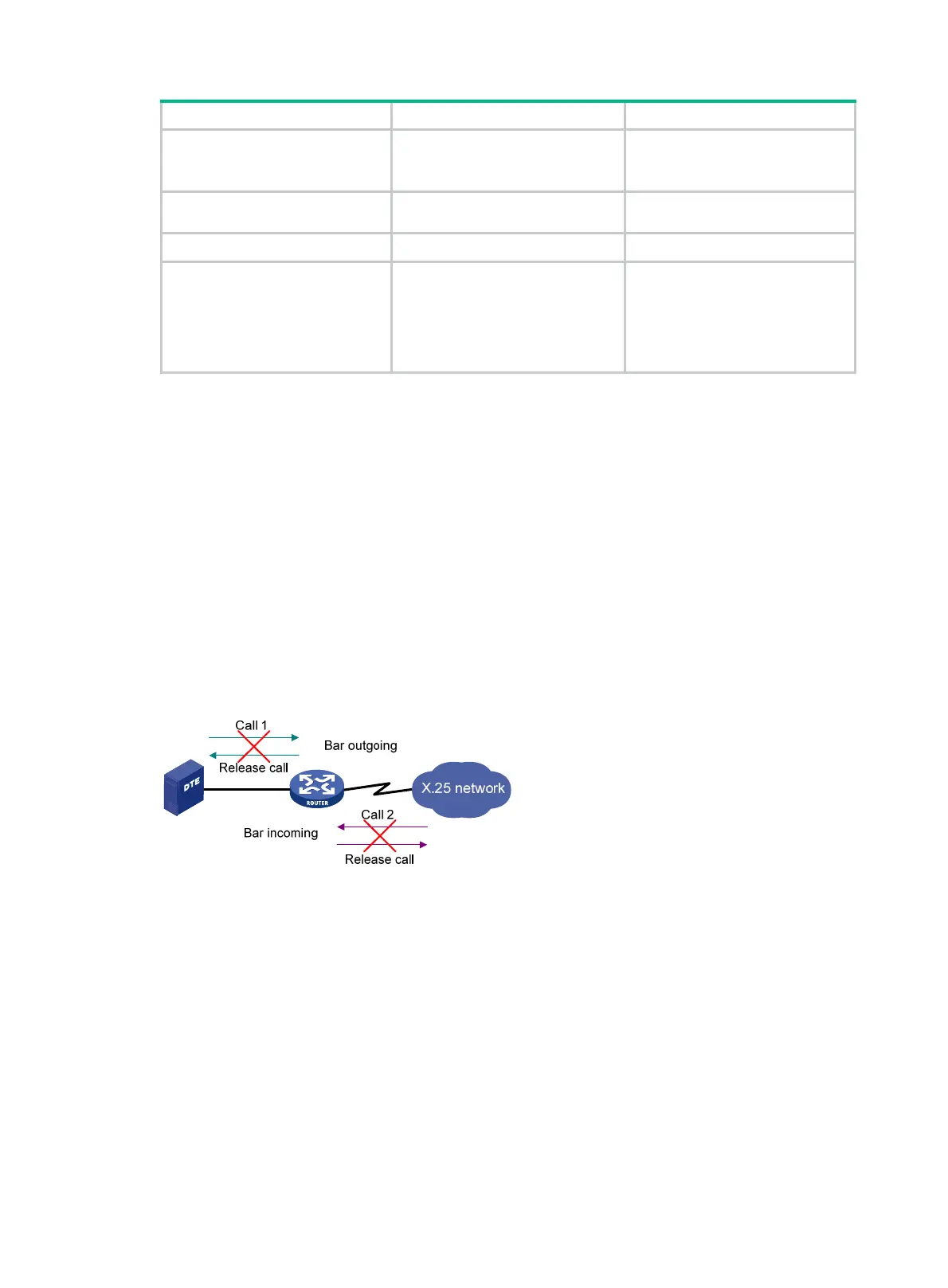331
Step Command Remarks
4. Add an interface or Annex G
DLCI to the hunt group
channel interface
interface-type
interface-number [
dlci
dlci-number ]
N/A
5. Add an XOT channel to the
hunt group.
channel xot
ip-address N/A
6. Exit to system view.
quit
N/A
7. Create an X.25 switching
route to the hunt group.
x25 switch svc
x.121-address
[
sub-dest
destination-address |
sub-source
source-address ] *
hunt-group
hunt-group-name
[
xot-source
interface-type
interface-number ]
Not created by default.
Configuring X.25 closed user group
Overview
Closed User Group (CUG) is a call restriction service provided by X.25 among all its optional
services. It governs call receiving and initiating capabilities of users (DTEs), allowing users in the
same CUG to call each other and forbidding users in different CUGs to do so. This allows a private
data communication subnet to form over public X.25 data communications networks for an
organization.
A user can belong to multiple CUGs. When the user calls another user in a CUG, the CUG number is
included in its capability negotiation message. The user can also be configured not to belong to any
CUG, in which case the capability message does not carry CUG information.
When used as DCE, the CUG function is shown in Figure 129.
Figure 129
CUG function implementation
The calls in Figure 129 are described as follows:
• Call 1—DTE originates a call, but outgoing capability is barred, so the call is removed by DCE
with CUG enabled.
• Call 2—DCE receives a call request and requests a connection with DTE. CUG function is
enabled on DCE and the incoming capability is barred, so the call is removed by DCE.
1. CUG function
You must enable CUG function first before configuring it, which is not enabled by default.
After CUG function is enabled, all calls, including those with or without CUG facilities are
suppressed. You can also define some suppression policies for CUG to process calls in
different ways.
Two types of CUG suppression policies are available. One is to suppress all incoming calls,
where the system removes the CUG facilities of all incoming calls with CUG facilities. The other
is to suppress the incoming calls matching the mapping specified as the preference rule, where

